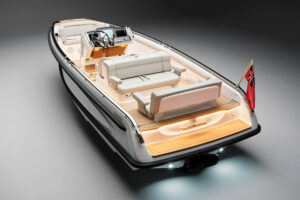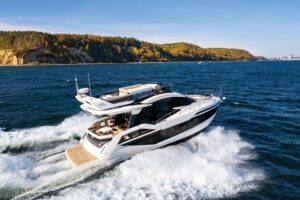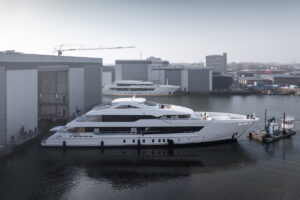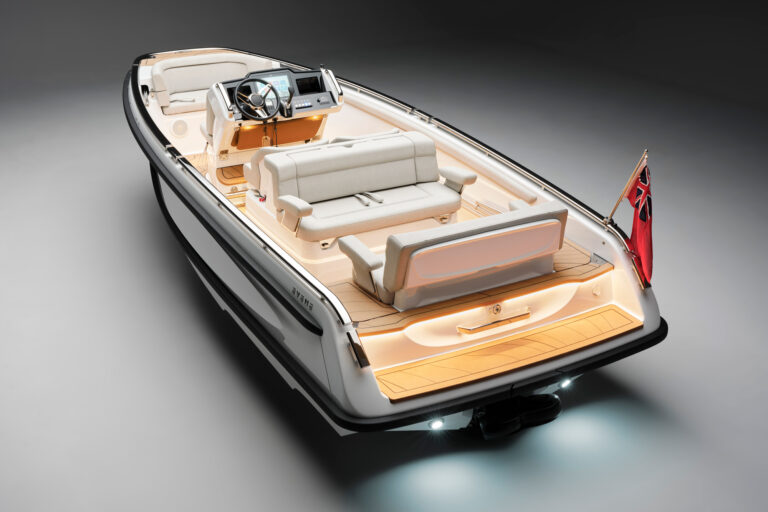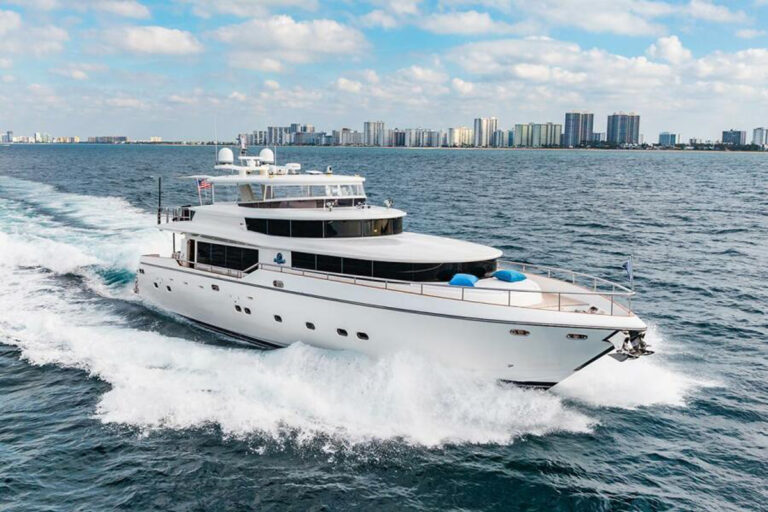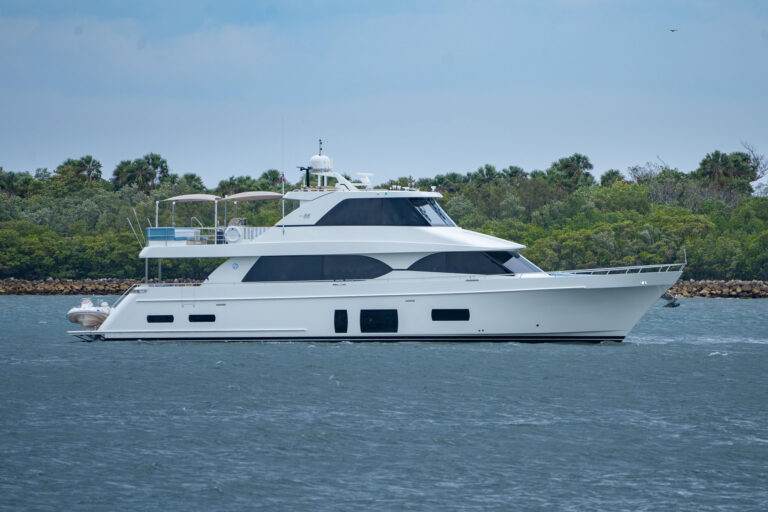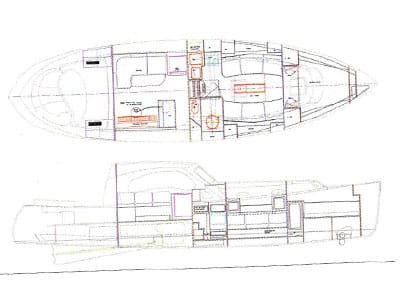
Lionheart Concerto
Among the many pleasures of our nautical madness is figuring out why boats look the way they do. All of them represent a designer’s interpretation of a client’s wishes. If the client plans to produce and sell the design in significant numbers, he must reign in the designer’s artistic flourishes in the interest of appealing to the masses. If the client wants to have a unique boat for his pleasure only, public opinion be damned, the naval architect or stylist gets to play with a higher level of creative freedom-subject to the client’s approval, of course.
Ken Sawyer, Bob Perry’s client for this 42-foot motor cruiser, took the relationship between the designer and client to another dimension. Sawyer, working with Perry and the design staff at Lyman-Morse Boatbuilding, has styled many of the elements we see and hear-in Lionheart’s Concerto. The sounds will pour from the Yamaha piano that Sawyer has specified to be installed on the starboard side of the pilothouse immediately abaft the helm.
At first glance, we may ask ourselves what sort of pharmaceuticals Sawyer had been taking when he asked Perry to look at photos of the famous Type 57S Bugatti Atlantique Coupe, designed by Jean Bugatti early in the 1930s. Jean was the son of the Italian/French industrialist and automaker Ettore Bugatti, and this coupe ranks among the loveliest automobiles of its era. Sawyer wanted Perry to work some of that car’s styling themes into his motor cruiser, but defining a boat with such distinctive automotive cues opens an artistic can of worms. In order to grasp the difficulties of translating elements of the Atlantique to the language of a yacht, we have to understand how Bugatti’s design works.
The car has a very long hood, a radiator grill in the shape of a tall and narrow horseshoe, a steeply raked split windscreen, a teardrop roofline, and fenders that echo the teardrop theme. As was the custom of the period, the Atlantique is narrow for its length and taller than a modern design would be. Jean Bugatti drew oval doors, each topped by a kidney-shape window-like the one we see in the profile of this 42-foot cruiser. The reveal line formed by the doors, coupled with the dramatic plunge of the roofline to its terminus, created an elegant shape, made all the more impressive by the line of the fenders. In spite of the long hood, which is out of proportion to the length of the cabin, the styling of the Atlantique hangs together in a way that defies reason.
These themes, as lovely as they are on the automobile, have lost some of their rightness in the translation. They simply don’t work as well on the boat. On the car, the kidney shape of the widow in each door enhances the overall teardrop shape of the cabin. Squaring off the back of the coupe would diminish the beauty of the shape, as it has done on the boat. Whereas the Bugatti sits low to the road and benefits from its elegant wheels and statement of purpose- speed- this motor cruiser, by comparison, suffers from the height in its superstructure and the mass in the topsides. Stretching her to 60 feet would give the automotive themes a better chance to work with their nautical sisters.
Nevertheless, Perry has done very well on 42 feet, making the best of the compromises imposed by the boat’s basic nature and purpose. He’s drawn a perfect sheerline and a beautiful canoe stern, both of which fit the period in which a launch of this type and the Bugatti lived. I remember seeing the rendering of his original design for the trunk cabin and house, which he’d executed in traditional lines, and thought, what a cool boat. I would have been happy with the boat as first presented on Lyman-Morse’s Web site, but I can’t help liking the whimsical nature of this design as Sawyer has envisioned it. We must also bear in mind change when she’s a three-dimensional reality in the water. As she approaches us along some roadstead off the coast of Maine, we’ll see the “sad face” created by the V-shape of the windscreen and the downward slope of each panel. The look will paint a smile on my face, for sure, because it shows a distinctive character. I hope also, that Sawyer specifies the bluegreen color shown in Perry’s rendering. It’s perfect for the boat.
The nature of the boat above the waterline may be whimsical, but she’s all business below. Her entry will soften the impact of small waves as she knifes through the water and the increase in beam-therefore, buoyancy-in the transition to a relatively nat run, which damps pitching, promises an easy motion in bigger seas. The nat run also damps roll, and the rocker-steeper aft than forward-will encourage the water to clear the run cleanly. She’ll be faster than her waterline length leads us to believe, and she’ll be stingy in her use of diesel fuel. The deep skeg encloses the propeller shaft, eliminating the drag created by this spinning cylindrical shape, and gives the boat exceptional directional stability. Chines carried from stem to stern will keep the bow wave from climbing the hull as they add lift. Perry said that he and Sawyer tank-tested the hull and had the time of their lives. The tests led Perry to put a subtle hook in the run, and the hull performed beautifully. It loves to cruise at 14 knots, he said, and it has a maximum speed of 20 knots. Whether or not you like this design as drawn, you have to applaud Sawyer and Perry for composing a tune we haven’t heard before.
LOA: 41’9″
DWL:40’1″
BEAM: 11’4″
DISPL.: 14,454 lb.
FUEL: 280 gal.
WATER: 110 gal.
ENGINE: 1 x 260-hp
Yanmar 6BY diesel
Robert H. Perry Yacht Designers Inc., (360) 652-7771; www.perryboat.com.
Lyman-Morse Boatbuilding, (207) 3546904; www.lymanmorse.com.

